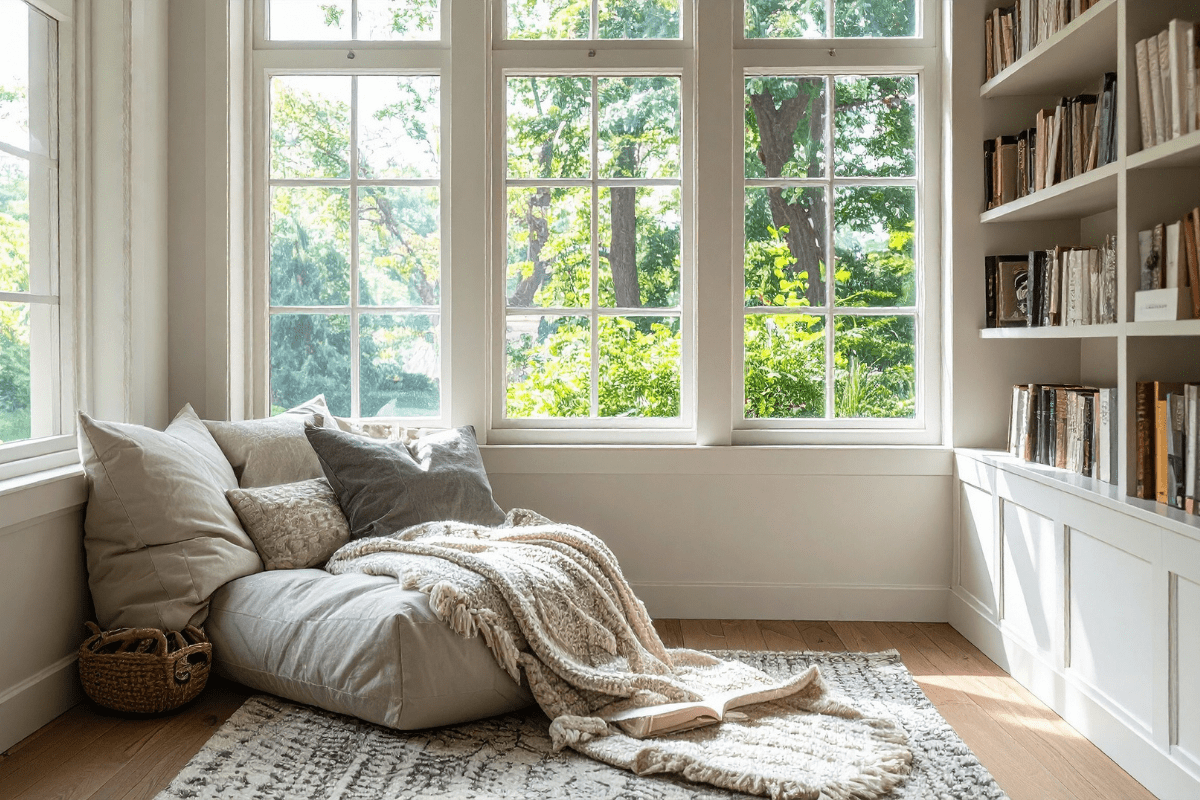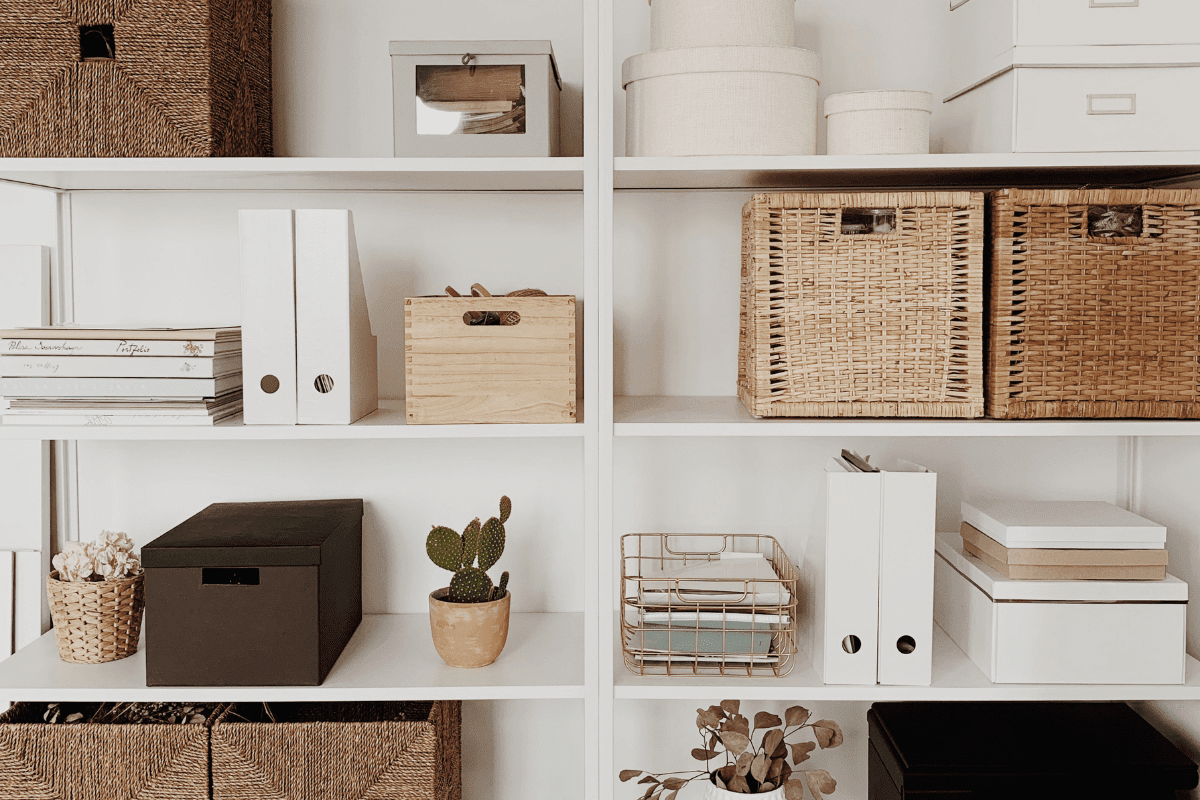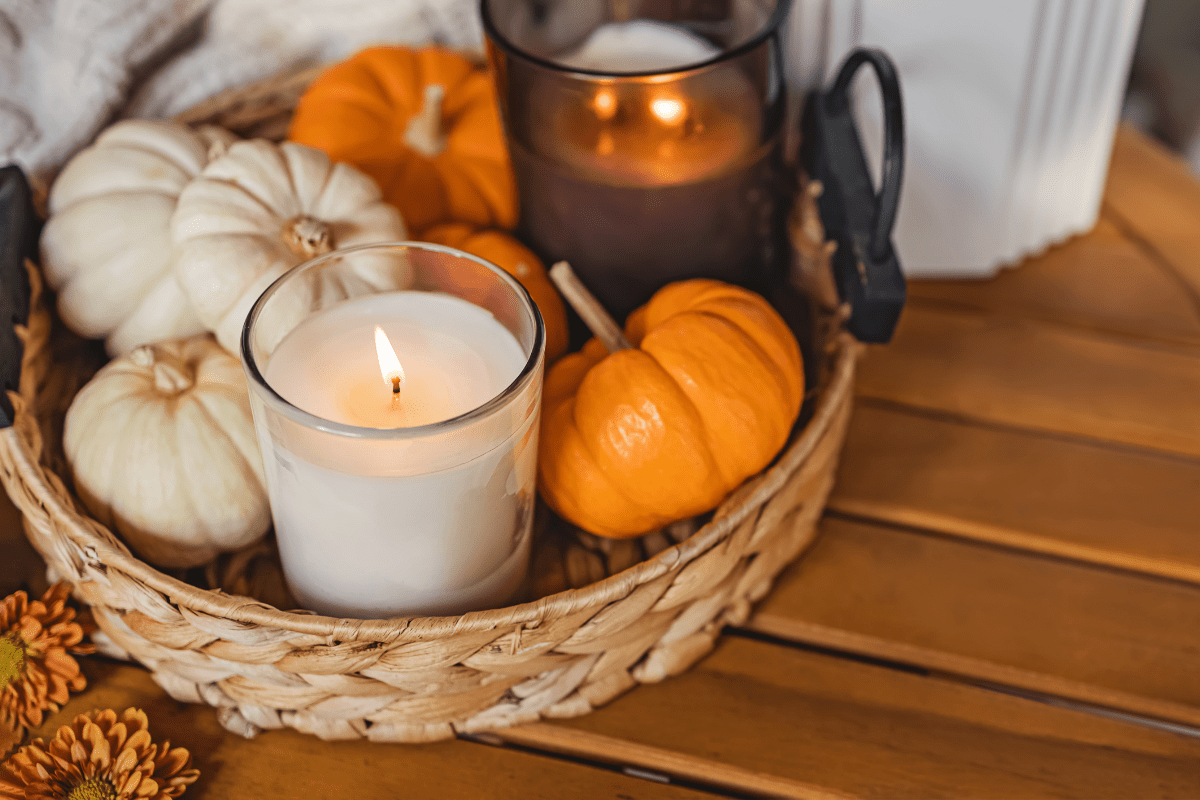In our fast-paced digital world, the simple pleasure of curling up with a good book has become more precious than ever. Yet many book lovers struggle to find the perfect spot in their home where they can truly lose themselves in literature. Whether you're dealing with limited space, budget constraints, or simply don't know where to start, creating a dedicated reading nook can transform your relationship with books and provide a sanctuary for relaxation and mental escape.
The holy trinity: Chair, light, and a place for your coffee
Before we dive into Pinterest-worthy aesthetics, let's talk about the three things that will make or break your reading experience. You need somewhere comfortable to sit, adequate light that won't give you a headache, and a surface for your inevitable beverage (because what's reading without a drink?).
Finding the perfect reading chair
Your reading chair is basically the foundation of your entire nook, so don't cheap out here if you can help it. According to furniture expert Jake Cross from Seldens furniture, you want to look for chairs with dovetail joints, corner blocks, and kiln-dried wood frame construction. Avoid anything that's just glued and stapled together unless you enjoy the sound of furniture slowly falling apart while you're trying to concentrate on a plot twist.
The chair should support your back properly and have arms at the right height for holding a book without your shoulders cramping up. I learned this the hard way after spending three months reading in a dining chair that turned me into a pretzel. Some people swear by wingback chairs for that classic library feeling, while others prefer recliners for maximum sprawl potential. If you're the type who likes to curl up with your legs tucked under you, look for wider chairs that can accommodate your preferred reading positions.
Here are your main chair categories:
- Wingback chairs for classic comfort
- Recliners with ottomans for feet-up reading
- Extra-wide chairs for leg-tucking readers
- Swivel chairs for light-chasing capability
Don't overlook thrift stores and estate sales for finding unique pieces with character. That slightly worn leather armchair might just need a good cleaning and maybe a throw pillow to become your perfect reading companion. Plus, vintage furniture often has better bones than some of the modern stuff that's designed more for looking good on Instagram than actually sitting in for hours.
Lighting that won't make you squint
Here's where a lot of people mess up their reading nooks. You need proper task lighting, not just whatever overhead light happens to be in the room. The National Optical Astronomy Observatory recommends 250 to 500 lumens per square meter for comfortable reading, which basically means bright enough to see clearly but not so bright you feel like you're being interrogated.
The key is positioning your light source over your shoulder so it illuminates your book without creating shadows. Floor lamps with adjustable arms are fantastic for this because you can move them around as needed. Wall-mounted sconces work great if you're short on floor space, and pendant lights can add a cozy vibe while keeping your surfaces clear.
Warm white bulbs (2700K to 3000K) create a much more inviting atmosphere than those harsh cool white ones that make everything feel like a dentist's office. And please, for the love of all that's holy, don't try to read by overhead lighting alone. That's a recipe for eye strain and eventual hatred of your reading nook.
Your lighting arsenal should include:
- Adjustable floor lamp with flexible arm
- Wall sconces for space-saving options
- Table lamp for side table convenience
- String lights for ambient coziness
Storage that actually makes sense
You need somewhere to put your current read, your next three books in the queue, your reading glasses, bookmarks, and that notebook where you jot down profound thoughts that turn out to be "buy milk" the next morning. Floating shelves at different heights work well because you can accommodate everything from thick hardcovers to slim paperbacks.
A side table with storage is basically essential. Look for one with drawers or a lower shelf where you can stash reading accessories. Baskets are great for corralling paperbacks, while sturdier boxes can handle the weight of hardcovers without collapsing.
If you're working with a really tight space, consider a rolling book cart that you can move around as needed. It's like having a portable library that follows you to your reading spot.
Location, location, location (but make it cozy)
The best reading nook locations have two things in common: decent natural light for daytime reading and enough separation from household chaos that you can actually concentrate. This doesn't mean you need a dedicated library room (though if you have one, I'm officially jealous).
Window spots are reading gold
Windows provide the best natural light for reading, and there's something inherently cozy about settling in with a book while watching the world go by outside. East-facing windows give you gentle morning light that's perfect for starting the day with a chapter or two. West-facing windows offer that warm afternoon glow that makes everything feel like a cozy movie scene.
If you have a wide enough window sill, you can create a simple window seat with some cushions and a few throw pillows. Bay windows are basically reading nook heaven, offering both light and a naturally defined space that feels separate from the rest of the room.
Just be mindful of harsh direct sunlight that can create glare on your pages. Sheer curtains or adjustable blinds let you control the light intensity throughout the day.
Bedroom corners work surprisingly well
Your bedroom might seem like an obvious choice, but it actually works really well for reading nooks. The key is positioning your reading area away from your bed so your brain doesn't associate the space with sleep. A corner by a window or opposite your bed can create a nice separation between rest and reading.
Bedrooms also tend to be quieter than living areas, which is helpful when you're trying to focus on complex plots or dense non-fiction. Plus, if you're an evening reader, you're already in the right room when you're ready to wind down for the night.
Don't overlook weird spaces
Some of the coziest reading nooks I've seen have been in spaces that weren't originally designed for sitting. Under-stair areas can become magical hideaways with the right approach. Wide hallways, unused formal dining rooms, and even large walk-in closets (with proper ventilation) can be transformed into intimate reading spaces.
The trick with unconventional spaces is making sure they have adequate lighting and ventilation. No one wants to feel like they're reading in a cave, no matter how cozy the cushions are.
Making it comfortable enough to lose track of time
Once you've got the basics sorted, it's time to add the comfort elements that transform a functional reading spot into a place where you actually want to spend time. This is where you can get a little indulgent without breaking the bank.
Textiles are your best friend
Throw pillows and blankets are the easiest way to make any reading chair more inviting. Keep a few different pillow sizes and firmness levels around so you can adjust your comfort level depending on what you're reading and how long you plan to stay put.
A dedicated reading blanket is one of those small luxuries that makes a big difference. Choose something soft and breathable in a natural fiber like cotton or wool. Having a special blanket helps signal to your brain that it's time to relax and focus on your book.
Don't forget about your feet. A small ottoman or footrest can make long reading sessions much more comfortable, especially if you're not in a recliner. Even a decorative storage cube can pull double duty as both a footrest and a place to store extra books.
Essential comfort additions:
- Soft throw blankets in natural fibers
- Multiple pillow sizes and firmness levels
- Small ottoman or footrest option
- Cozy area rug to define space
The little things that matter
Keep a small caddy or basket nearby with your reading essentials: bookmarks, reading glasses, a notebook for jotting down thoughts, and maybe some good pens. Having everything within arm's reach means you won't break your reading flow getting up to find things.
Consider the temperature of your space too. A small fan for summer reading sessions or a space heater for winter coziness can make your nook comfortable year-round. Plants not only improve air quality but add life and color to your reading environment.
And here's a pro tip: invest in a good book light for evening reading, especially if you share your space with someone who might be sleeping or watching TV. Clip-on reading lights provide focused illumination without disturbing others.
Budget-friendly ways to create reading magic
Creating a beautiful reading nook doesn't require spending a fortune, especially if you're willing to get a little creative. Some of the most charming reading spaces I've seen were put together with thrift store finds and DIY ingenuity.
Thrift shopping for treasures
Estate sales and thrift stores are goldmines for reading nook furniture. Look for vintage armchairs that might need minor reupholstering, unique side tables with character, or interesting lamps that just need new shades. These pieces often have more personality than brand-new furniture and cost a fraction of the price.
Don't be afraid of furniture that needs a little love. A wooden side table with scratches can be sanded and refinished for a custom look. An armchair with good bones but tired upholstery might just need a slipcover or some strategic throw pillows to look fresh again.
Repurposing what you already have
Before you buy anything new, walk through your house and see what you might repurpose. That dining room chair that never gets used might be perfect for reading with the addition of a cushion. A dresser from a bedroom could become a bookshelf and display area for your reading nook.
Ottomans from other rooms can provide seating, storage, and footrest capabilities. Even a sturdy storage box can be transformed into a side table with the addition of a decorative tray on top.
Simple DIY projects for custom touches:
- Floating shelves from basic brackets and boards
- Reading caddy from wooden crates
- Custom pillows in your preferred colors
- Lamp shade updates with new fabric
Bringing it all together without overthinking it
The most important thing about creating a reading nook is actually using it once you've set it up. Don't let it become a decorative space where you pile laundry or store things you don't know what to do with. Protect its purpose by keeping it clear and inviting.
Start small and build gradually. Begin with comfortable seating and good lighting, then add storage, comfort elements, and decorative touches as you figure out what works best for your reading habits. This approach prevents you from overwhelming yourself while allowing you to create a space that truly reflects your needs.
Remember that your reading nook should evolve with your changing preferences. What works for summer reading might need adjustment for winter coziness, and your storage needs will definitely change as your book collection grows. Design your space to be flexible and adaptable rather than rigidly perfect.
The goal isn't to create something that looks like it belongs in a magazine (though if it does, that's a nice bonus). The goal is to create a space where you genuinely want to spend time with a good book. Whether your nook is a simple corner chair with a lamp or an elaborate built-in window seat with custom storage, what matters is that it becomes a place where you can escape into stories and reconnect with the simple pleasure of reading.
Your future self, curled up with a captivating novel and nowhere else to be, will thank you for taking the time to create this little sanctuary. Now stop scrolling through reading nook inspiration photos and go set up that chair by the window. Your books are waiting.





